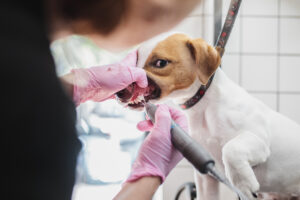When our beloved animal companions face life-limiting illnesses or the inevitable decline of old age, our focus shifts from seeking a cure to providing comfort. Pet hospice, also known as palliative care, is a compassionate approach that prioritizes your pet’s quality of life over curative treatments. With pet hospice, you can provide love, support, and pain management, allowing your furry friend to live out their remaining days with dignity and peace.
Understanding Pet Hospice
Pet hospice is a holistic approach to care that encompasses the physical, emotional, and spiritual needs of both the pet and their family. It involves a team of professionals, including veterinarians, veterinary technicians, and sometimes even pet therapists or grief counselors. The goal is to create a comprehensive care plan that addresses pain management, symptom control, nutritional support, and emotional well-being.
When is Pet Hospice Appropriate?
Pet hospice is not solely for the final days or weeks of a pet’s life. Pet owners and veterinarians can initiate hospice care at any stage of a chronic or terminal illness when the focus transitions from cure to comfort. Consider pet hospice in the following scenarios:
- Terminal Illnesses: When a pet is diagnosed with a terminal illness like cancer, heart disease, or kidney failure, hospice care can help manage symptoms and improve quality of life.
- Chronic Conditions: For pets with chronic conditions like arthritis, diabetes, or mobility issues, hospice care can provide ongoing pain management and support.
- Geriatric Care: As pets age, they may experience a decline in health and well-being. Hospice care can address age-related issues like cognitive decline, incontinence, and decreased appetite.
Benefits of Pet Hospice
- Pain Management: Hospice care prioritizes pain management, ensuring that your pet is as comfortable as possible during their final journey.
- Symptom Control: Hospice teams work to manage symptoms like nausea, vomiting, difficulty breathing, or anxiety, improving your pet’s quality of life.
- Emotional Support: Hospice care provides emotional support for both the pet and their family. It offers a safe space to discuss fears, concerns, and grief.
- Quality Time: Hospice care allows you to focus on spending quality time with your pet, creating lasting memories and cherishing each moment.
- Peaceful Transition: Hospice teams can help you make informed decisions about end-of-life care, ensuring a peaceful and dignified passing for your pet.
Components of Pet Hospice Care
- Pain Assessment and Management: Veterinarians will regularly assess your pet’s pain levels and adjust medication or therapies as needed.
- Symptom Management: Hospice teams will address other symptoms like nausea, vomiting, incontinence, or anxiety to enhance comfort.
- Nutritional Support: A tailored diet plan ensures your pet receives adequate nutrition and hydration, even with a decreased appetite.
- Emotional Support: Hospice teams will provide emotional support for both you and your pet, offering guidance and resources to help you navigate this difficult time.
- End-of-Life Discussions: Open and honest conversations about your pet’s prognosis and end-of-life options are an essential part of hospice care.
Choosing a Pet Hospice Provider
When selecting a pet hospice provider, look for a team with experience in end-of-life care and a compassionate approach. Ask for recommendations from your veterinarian or other pet owners who have used hospice services.
A Final Act of Love
Choosing hospice care for your pet is a profound expression of love. It allows you to prioritize their comfort and well-being during their final journey, ensuring they are surrounded by love, support, and dignity. While it’s a difficult decision, knowing that you provided your pet with the best possible care during their final days can bring solace and peace of mind.
Get started today by joining the Truffle Paws family and embrace a worry-free pet parenthood journey.







